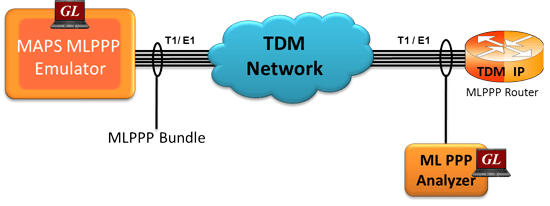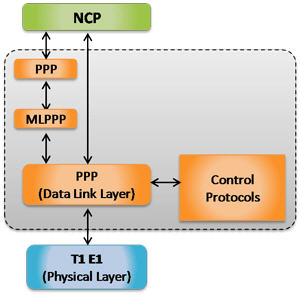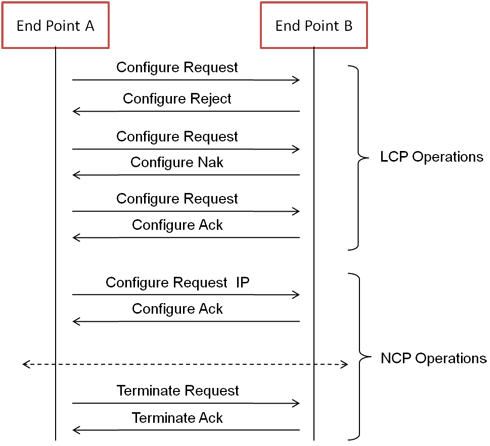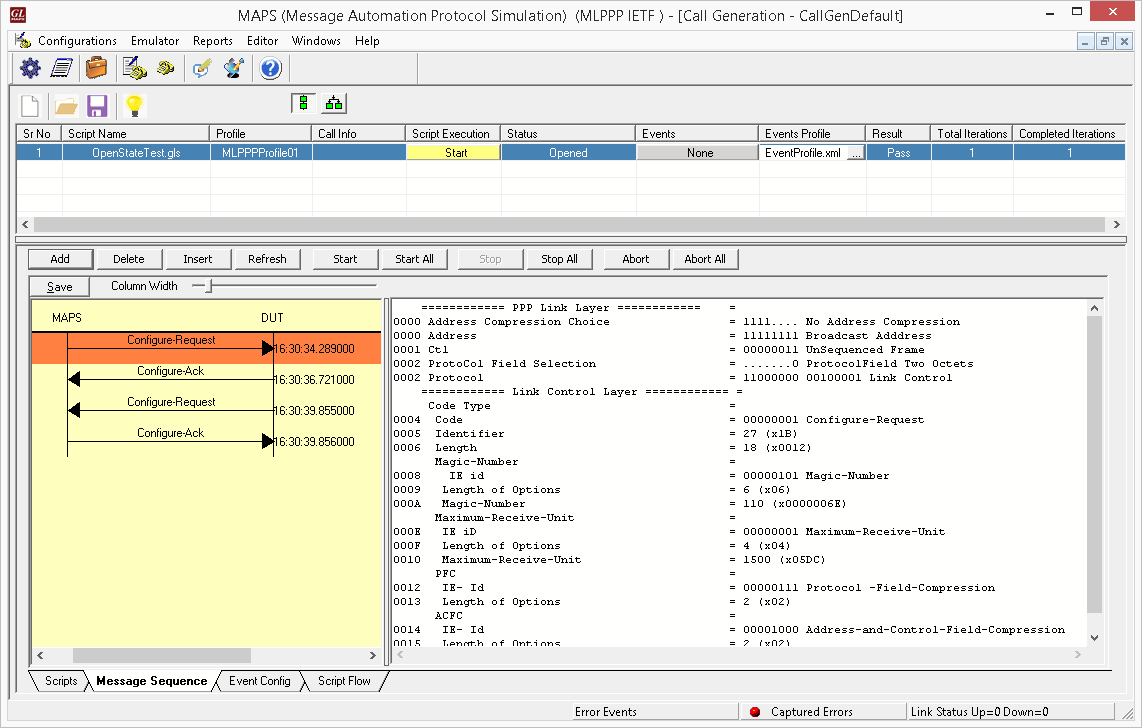MAPS™ MC-MLPPP Conformance Tester
(MC-MLPPP Conformance Testing)

Background
The Point-to-Point Protocol (PPP) provides a standard method for transporting multi-protocol datagrams over point-to-point links.
Point-to-Point Protocol - PPP (RFC 1661) is a link layer protocol, which encapsulates other network layer protocols like IP for transmission on synchronous (like T1 E1) and asynchronous communications lines. When transmitted over T1 E1 line, PPP frames are based on HDLC frame structure. The PPP encapsulation provides for multiplexing of different network-layer protocols simultaneously over the same link. Other optional facilities provided are authentication of the identity of its peer on the link, and determination when a link is functioning properly and when it is failing.
Multi-Link PPP (RFC 1990), bundles multiple link-layer channels into a single network-layer channel. A bundle can consist of multiple physical links of the same type or physical links of different types. Data sent through this channel will be distributed among all the links. It is a technique used to derive larger bandwidth pipe by aggregating smaller bandwidth pipes e.g. from multiple T1s or E1s. The protocol allows splitting, recombining, and sequencing datagrams across multiple data links into a single logical pipe or bundle.
The Multi-Class extension to Multi-Link PPP (MC-MLPPP) (RFC 2686), allows a sender to fragment the packets of various priorities into multiple classes of fragments, and allows high-priority packets to be sent between fragments of lower priorities.
Overview
GL’s MAPS™ MLPPP is an advanced protocol simulator/tester for MC-MLPPP/MLPPP/PPP protocols over TDM (T1 E1). The tester can simulate a complete PPP/MLPPP link between two peers (Router or a Switch), with MLPPP signaling conforming to IETF specifications..
The MAPS™ MLPPP supports testing network elements, error tracking, regression testing, conformance testing, and load testing/call generation. The test tool can run pre-defined test scenarios against MLPPP test objects in a controlled & deterministic manner. The test tool also incorporates the flexibility to modify call parameters & message contents (arbitrary manipulation of messages, information elements and message sequence on the different protocols).
MAPS™ MLPPP conformance scripts, suitable for conformance tests and functional tests, where test objects can be accurately, reliably and comfortably validated for compliance with IETF standard. It is suitable for manufacturers, network operators and service providers to address all stages of the development cycle, regression testing through to type approval, acceptance testing.
The application gives the users the unlimited ability to edit MLPPP messages and control scenarios (message sequences). "Message sequences" are generated through scripts. "Messages" are created using message templates. The application supports powerful utilities like Message Editor, Script Editor, and Profile Editor which allow new scenarios to be created or existing scenarios to be modified using MLPPP messages and parameters.
GL also provides an independent GUI based PPP protocol analyzer (optional application – XX135) for online capture and decode of the signaling in real-time both during tests and as a stand-alone tracer for live systems.
Supported Protocols Standards
ISUP Call Simulation
Typical Call Flow Scenario
A typical signaling exchanged between two peers in PPP network is as shown below.
Link Establishment Phase Conformance Test
MAPS™ MLPPP is configured with the conformance script to receive the Configure Request message and reply with a valid Configure-Ack. The test script is considered to be successfully executed, when the DUT sends the Configure-Nak suggesting new Magic Number.
Open Link State Conformance Test
MAPS™ MLPPP is configured with the conformance script to send the Configure-Request with Magic Number, Maximum Receive Unit, Protocol Field Compression, and Address Field Compression Fields parameters. DUT replies with Configure-Ack. Link should enter the Opened state.
Resources
Note: PCs which include GL hardware/software require Intel or AMD processors for compliance.
Please Note: The XX in the Item No. refers to the hardware platform, listed at the bottom of the Buyer's Guide, which the software will be running on. Therefore, XX can either be ETA or EEA (Octal/Quad Boards), PTA or PEA (tProbe Units), XUT or XUE (Dual PCIe Express) depending upon the hardware.



